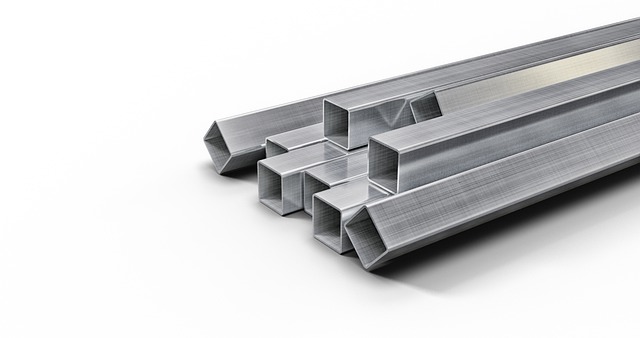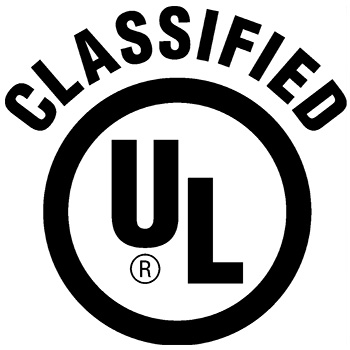How Strong Is Square Tubing And When Should You Use It?

Do you need steel tubing for your next project? Are you unsure how strong each type of steel tube is? Need to get a better idea of which type of tube to use? If you answered yes to these questions, you’re in luck because we’ve put together a guide intended to answer the question, “How strong is square tubing?”
As you read through this guide, you’ll learn about which kind of steel tubing is strongest. You’ll also find out about how strong square steel tubing is. You need to know that you have the right steel tube for what you need to do. You also want to be sure it can hold up to the stresses of the construction project or application.
We believe that is important, too, so read on to learn everything you need to know.
Strongest Steel Tubing
Steel square tubing isn’t the strongest type of tubing you can use. It is, however, more applicable than round or other shaped tubing in certain uses.
Round steel tubing can withstand far higher weight-per-feet than square or rectangular tubing. This increased weight-bearing capacity is because a circle is a stronger shape than a square. Because there are no corners, there are fewer pressure points to give way when excess load is applied.
Round steel tubing is also preferred in many use cases. This is particularly the case when the steel tubing is intended to move water or liquids. Round steel tubing works better for moving liquids as there are fewer points of resistance in its interior shape. Square steel tubing performs better in terms of strength when the tube needed is long. Over longer distances of tubing, a square shape will bend less than a round one.
Square steel tubing is also preferred if the tube must fit snugly into its surroundings. In such cases, square steel tubing can be stronger than round because it can be linked to another tube or framing piece. For rough purposes, we can compare square and round steel tubing to find out which is strongest. With an approximation in mind, round steel tubing is about ten times stronger.
What Is Square Tubing?
Square steel tubing is tubing that is manufactured using welding. This kind of tubing is of structural grade. It comes in either type A513 or A500 Grade B. The different kinds of steel tubes are determined by the size and how thick the tube’s wall is. Regardless of the grade, steel tubing is used for a variety of purposes.
Typical uses of square steel tubing include construction and structural uses. It is also used for a wide variety of manufacturing and fabrication applications. You can find square steel tubes in vehicles, trailers, agricultural and transport equipment, and much more. The square shape of this steel tubing is ideal for many different reasons. It offers strength that channeled or angled tubing does not. It is also more rigid than channeled or angled tubing.
Square steel tubing is also versatile. Manufacturers like to use it because it is easy to cut and weld into new applications.
How Strong Is Square Tubing?
Square tubing is highly regarded for its strength-to-weight ratio, which makes it an excellent choice for both structural and aesthetic applications. The strength of square tubing is primarily determined by its material composition, wall thickness, and cross-sectional area. Common materials used for square tubing include carbon steel, stainless steel, and aluminum, each offering different levels of strength and durability.
- Material Composition: Carbon steel square tubing is the most commonly used type due to its high strength and durability. It can withstand significant loads without deforming, making it ideal for structural applications. Stainless steel square tubing, while slightly less strong than carbon steel, offers superior corrosion resistance, making it suitable for environments where exposure to moisture or chemicals is a concern. Aluminum square tubing, on the other hand, is lightweight and resistant to corrosion but has a lower strength compared to steel, making it suitable for applications where weight savings are critical but extreme strength is not required.
- Wall Thickness: The wall thickness of square tubing plays a crucial role in its load-bearing capacity. Thicker walls provide greater strength and resistance to bending or buckling under heavy loads. For example, a square tube with a 0.25-inch wall thickness will be significantly stronger than one with a 0.125-inch wall thickness. This makes thicker-walled tubing ideal for heavy-duty structural applications where high loads are expected, such as in construction beams or load-bearing columns.
- Cross-Sectional Area: The cross-sectional area of square tubing is another important factor in determining its strength. Larger cross-sectional areas distribute the load over a greater surface, reducing the stress on any single point. This makes larger square tubing particularly useful in applications where even load distribution is critical, such as in scaffolding, bridges, or large-scale frameworks.
When Should You Use Square Tubing?
Square tubing is highly versatile and can be used in a wide range of applications. Here are some scenarios where square tubing is the preferred choice:
- Structural Applications: Due to its strength and rigidity, square tubing is often used in construction for frameworks, columns, and support beams. Its uniform shape and equal strength in all directions make it ideal for use in structures that need to withstand high loads and stresses, such as bridges, buildings, and large-scale industrial projects.
- Fabrication and Manufacturing: Square tubing is commonly used in the fabrication of machinery, equipment, and vehicles. Its ability to be easily cut, welded, and shaped makes it a go-to material for creating custom frames, supports, and components. In the automotive industry, for example, square tubing is used to construct roll cages, chassis, and other structural elements that require both strength and precision.
- Aesthetic and Architectural Uses: Beyond its structural capabilities, square tubing is also favored for its clean, modern appearance. It is often used in architectural projects for railings, fences, gates, and decorative elements. The smooth, straight lines of square tubing add a contemporary look to buildings and outdoor spaces, while still providing the necessary strength and durability.
- Agricultural and Industrial Equipment: Square tubing is widely used in the construction of agricultural and industrial equipment, such as trailers, racks, and storage systems. Its ability to withstand heavy use and resist corrosion makes it ideal for outdoor and industrial environments where durability is paramount.
- DIY and Home Improvement Projects: For hobbyists and DIY enthusiasts, square tubing offers a robust yet manageable material for a variety of projects. Whether building a custom workbench, creating outdoor furniture, or constructing a garden trellis, square tubing provides the necessary strength and versatility to bring these projects to life.
Choosing the Right Square Tubing for Your Project
When selecting square tubing for your project, consider the following factors:
- Load Requirements: Determine the amount of weight or stress the tubing will need to support. For heavy loads, choose tubing with a thicker wall and a larger cross-sectional area.
- Environmental Conditions: If the tubing will be exposed to moisture, chemicals, or extreme temperatures, consider using stainless steel or aluminum for better corrosion resistance.
- Fabrication Needs: Consider how the tubing will be cut, welded, or joined with other materials. Thicker walls may require more advanced fabrication techniques but will offer greater strength.
- Aesthetic Considerations: If the tubing will be visible in the final application, choose a material and finish that complements the overall design. Powder-coated or polished finishes can enhance the appearance of square tubing in architectural projects.
By understanding the properties and applications of square tubing, you can select the right material and design to ensure the success and durability of your project. Whether you’re working on a large construction site or a small DIY project, square tubing offers a versatile and reliable solution.
Use Square Tubes When Needed
While square steel tubing isn’t as strong as round steel tubing, it is still solid. It also has properties, such as its shape, that make it preferable to round steel tubing in many situations.
It’s worth asking the question, “How strong is square tubing?” because you must know if it will hold the weight your project needs. Work with professional architects or engineers to determine whether square steel tubing is the right material. They will also be able to help you with working out what size of square steel tubing you need. You’ll need to pay attention to how much weight you need your square steel tubing to carry across each foot of length. The more weight you need, the larger the size of the tube you will require.
Talk to a Square Tubing Expert Today
Fortunately, we’re in the business of supplying square steel tubing, as well as lots more, and we’ve been doing it for a long time. We know our tubes! We’ll work with you to ensure you have the right square steel tube where and when you need it.
Get in touch with us today to talk to an expert about your requirements.






